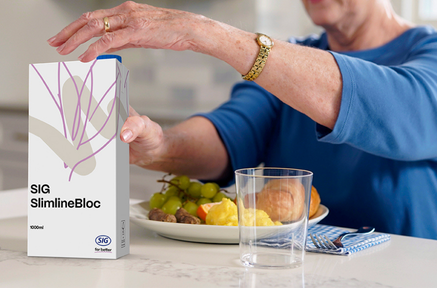India’s dairy evolution demands agile packaging
India has journeyed from being a milk-deficient nation to becoming the largest milk producer globally, accounting for nearly 22% of global production. As consumption shifts from plain milk to value-added and ready-to-drink (RTD) dairy products like flavored milk, fermented drinks, and protein-enriched beverages, the packaging industry has innovated to keep pace. This evolution calls for solutions that balance safety, convenience, shelf life, and sustainability- all without depending on cooling facilities. Enter aseptic packaging- a game-changer in dairy logistics, consumption, and e-commerce.
Aseptic packaging: The silent revolution
Aseptic packaging allows dairy products to remain fresh for months without refrigeration or preservatives- ideal for India’s diverse geography and infrastructure constraints.
This advancement is significant in a country where rural areas lack cold-chain infrastructure, making it difficult to transport perishable dairy goods. With aseptic cartons, producers can reach remote markets efficiently, reducing spoilage, increasing shelf life, and cutting food waste.
Agility in packaging for a rapidly evolving market
The Indian dairy consumer is no longer just seeking nutrition- they're demanding convenience, functionality, and on-the-go formats. From school children sipping flavored milk to urban professionals reaching for protein drinks, the use cases are multiplying.
This agility allows dairy brands to quickly scale new product formats, enter new markets, and cater to niche customer segments with minimal logistical challenges.
Sustainability in focus: Why aseptic packaging is greener
Today’s environmentally conscious consumers are not just buying a product, they’re buying into a brand’s values. Aseptic packaging supports this by enabling:
- Lower carbon footprint: Producing and transporting aseptic cartons emits 45% less CO₂ than PET bottles for every 1,000 liters of UHT milk[1]
- Recyclability potential: While large-scale recycling of cartons is still developing in India, the packs are technically recyclable, and recovery is expanding through SIG-supported programs across multiple states[2]
- Less food waste: Aseptic packaging keeps products shelf-stable without refrigeration, helping reduce spoilage in areas lacking cold-chain access, a major source of post-harvest food loss globally[3]
The future is fluid, and so must be packaging
SIG is actively addressing one of the Indian dairy industry's most critical infrastructure hurdles- limited cold storage, especially in rural and semi-urban areas. By leveraging aseptic packaging technology, SIG enables safe and hygienic distribution of dairy products without the need for refrigeration. Aseptic packaging not only limits exposure to oxygen and light, key factors in preserving product integrity, but also enables ambient storage and supports long-distance transport. The solution expands product reach, lowers infrastructure and energy costs, and aligns with India’s broader goals for sustainable development. As the Indian Government moves to implement White Revolution 2.0, SIG’s technologies ensure seamless integration into national supply chains, paving the way for a more inclusive, efficient, and resilient dairy ecosystem.
[1] For 1,000 liters of UHT milk, for instance, an aseptic carton has a 45% lower carbon footprint across its life cycle than a PET bottle according to an ISO-compliant life-cycle assessment, conducted by the independent Institute for Energy and Environmental Research (IFEU), and critically reviewed by an independent panel
[2] Aseptic cartons are technically recyclable through hydropulping, which recovers about 75% of the fibre. The remaining PolyAl is repurposed into boards or pellets. While not yet recycled at scale in India, SIG supports recovery initiatives in Himachal Pradesh, Gujarat, and Uttar Pradesh (SIG, Used Beverage Carton Recycling in India; IFEU, Carton Sustainability Assessment; ResearchGate, Recycling of Aseptic Beverage Cartons: A Review, 2021).
[3] The UNEP estimates that the lack or inefficiency of cold-chain systems accounts for more than 1/5 of total post-harvest food waste. It also accounts for 1 gigaton of CO2eq (UN Environment program, Sustainable Cold Chain and Food Loss Reduction, 2019)
- July 29, 2025

Merry Christmas, Season's Greetings and a Happy New Year

Forest freeways: Keeping nature connected


